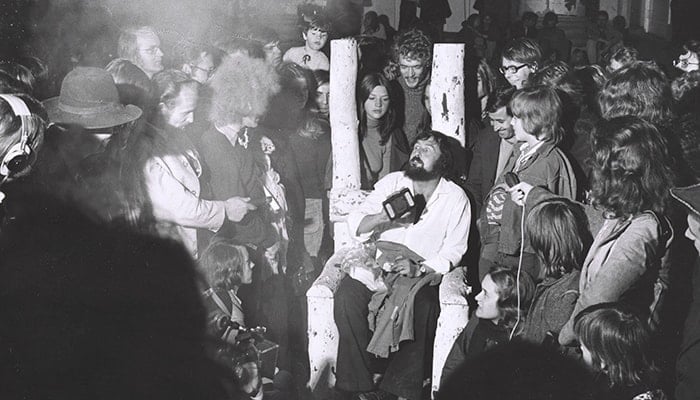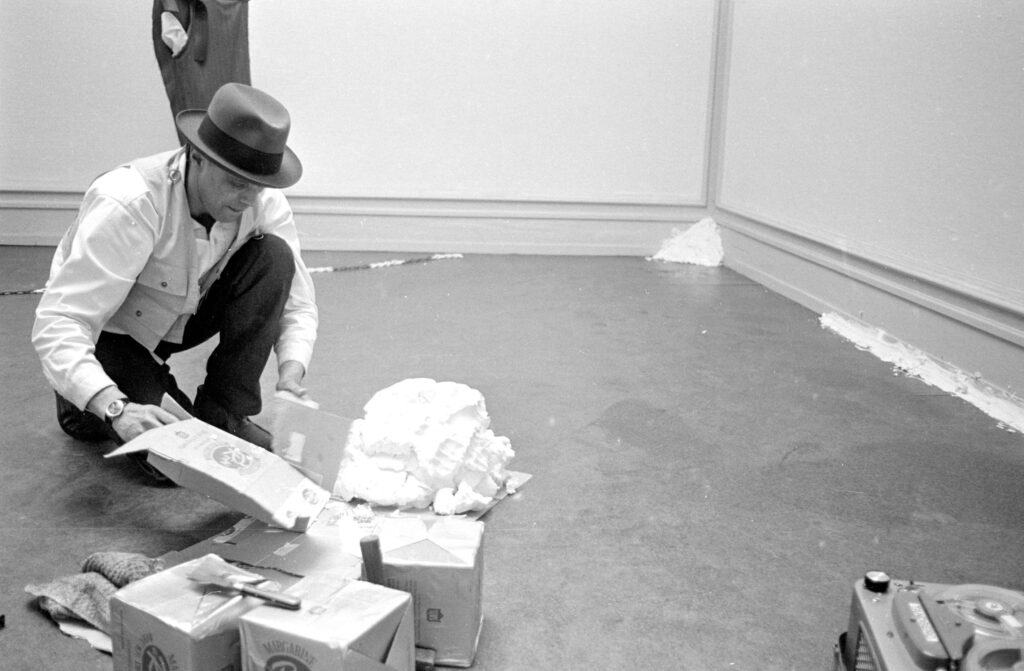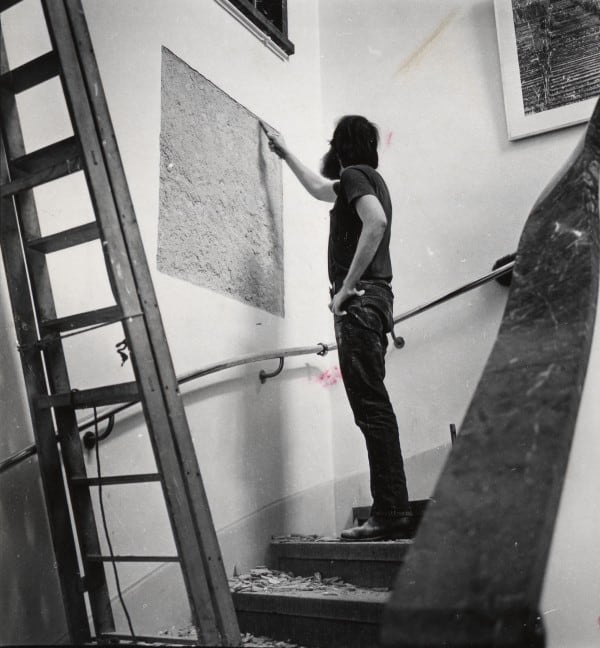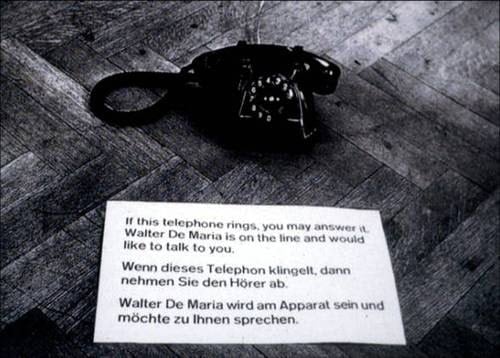Articles and Features
The Shows That Made Contemporary Art History: Live in Your Head. When Attitudes Become Form

By Shira Wolfe
“Harald Szeemann wanted to show everything that we had not yet seen, everything that came after “Pop Art” and “Minimal Art”, without any real criteria of choice; this is the first impression that is likely to emerge from this extensive exhibition.” – Grégoire Muller, exhibition catalogue.
There are multiple ways to delve into the fascinating world of contemporary art. One may consider the development and succession of different artistic movements; the personalities of the major players in the field; not to mention the most iconic artworks that have defined our era. But why not consider the history of art exhibitions themselves? Landmark shows of the modern and contemporary period have impacted and shaped the course of art history, both launching entirely new genres and shaping the history and habits of exhibition-making through innovative practices. This week, we go back to 1969 to examine the great impact made by the exhibition Live in Your Head. When Attitudes Become Form, at Kunsthalle Bern. The show was a controversial international survey of Post-minimalism and Arte Povera, at a time when these movements were still in the early stages of development and had yet to gain widespread exposure and recognition.
Live in Your Head. When Attitudes Become Form – A Turning Point for Exhibitions
In March 1969, the exhibition Live in Your Head – When Attitudes Become Form, opened to the public at the Kunsthalle in Bern, Switzerland, featuring 69 artists from America and Western Europe. The show became one of the most documented and commented upon exhibitions in recent art history. At the time of the exhibition, the role of the curator and the artist within institutions, as well as the very approach towards exhibitions, was being questioned and found itself at a turning point. When Attitudes Become Form reflected these particular questions and new approaches. What was perhaps the most innovative aspect was the relationship between the curator, the artists, and the exhibition itself. The artists participating in the show began making their works on site, basically taking over the institution of the Kunsthalle and using its spaces as their artist studios; many of the artworks on display were made in the weeks leading up to the show. The “Attitudes” in the title of the show refers to the process-related nature of the works that were exhibited. These pieces spanned Multiformal or non-rigid art, Conceptual art, Land art, Process art, and Arte Povera. The process of the creation as well as the interactions between the different artworks was seen as more important than the actual form they were to take.
Artist Keith Sonnier added the phrase atop the catalogue page, “Live In Your Head”, capturing the ethos of the 1960s. The catalogue openly revealed and considered the process of the artists and the curator of the exhibition, Harald Szeemann; to the point that the address list Szeemann used in New York, as well as letters responding to his invitations to the show, were added to the catalogue. According to one of the participating artists, Piero Gilardi, the exhibition became a forum to open up debates on what work and the institution could be.

The Role of the Curator – Harald Szeemann
Harald Szeemann is one of the reasons why Live in Your Head proved to be so remarkable, as he really introduced the audience to the idea of the curator as we understand it today. The exhibition brought him international acclaim and secured him the position of the most important curator of the post-war period. It also led Szeemann to recreate himself as an independent exhibition maker, inspiring generations of curators to come to do the same. Moreover, Szeemann’s role in curating Live in Your Head has come to represent the contemporary idea of the curator as the inspired partner of the artist, who is just as much a creative actor generating original ideas and important work that brings art into the public consciousness.
For Live in Your Head, it was Szeemann’s great wish to show everything he hadn’t seen before, all art which came after Pop Art and Minimal Art. He was a great advocate for the new art emerging in the 1960s, which was grounded in an inner attitude that elevated the artistic process over the final product and its aesthetics and form. This idea went hand in hand with Szeemann’s desire to be free of the structures of the mainstream art world, which seemed to simply create a system for supplying the wealthy with aesthetic objects. By turning the Kunsthalle Bern into a giant artist’s studio, and providing space for artist Piero Gilardi’s idea of the exhibition as a workshop and site for discussion, Szeemann actively put into practice his desire for change in the art world.
Artists and Artworks Included in the Exhibition
The works included in the exhibition spanned different styles, approaches, and nationalities. Among the artists included in the show were Joseph Beuys, Joseph Kosuth, Bruce Naumann, Carl Andre, Yves Klein, Claes Oldenburg, Piero Gilardi, Douglas Huebler, Michael Heizer, Lawrence Weiner, Allighiero Boetti, Richard Long, Eva Hesse, Ger Van Elk, Hanne Darboven, Dennis Oppenheim, Walter De Maria, Richard Serra, Gilberto Zorio, Mario Merz, Jan Dibbets, Daniel Buren and Jannis Kounellis, among many others.

These artists were interested in the complex layering of meaning, moving beyond merely the object and the situation. Only about 40 artists exhibited actual objects. The others related their work in a different way, referring to this as “information” to be shared, rather than an object or process-based work, as was the case with Richard Long’s account of a three-day walk in the mountains. Other notable artworks include Richard Serra’s splashing of lead inside the foyer of the Kunsthalle, Jan Dibbets’s excavation of the corner of the building to expose its foundations, Michael Heizer’s smashing of the sidewalk outside the museum, and Lawrence Weiner’s removal of part of the wallboard, revealing the underlying structure.

Important was the fact that the artists in the exhibition, though not tied together by any specific art movement or style, were in some way loosely bound together by their materials or the marks they made on the Kunsthalle. Collaborative work and discourse between the “temporary artistic community” formulated the exhibition, in a radical new way of dealing with spaces and art shows.

The Legacy of When Attitudes Become Form
The generally conservative Swiss public did not react well to the show – cartoons mocked the exhibition and someone even dumped manure at the entrance of the Kunsthalle. The museum decided to cancel Szeemann’s planned Joseph Beuys exhibition and he resigned, going on to create a highly successful career as an independent curator, something relatively new at the time.
When Attitudes Become Form was aimed at discovering new systems for information, exchange, and artist interaction. At the same time, it established a new system of corporate funding for exhibitions the likes of which hadn’t been seen before. Corporations like Phillip Morris and Ruder & Finn provided a great deal of financial backing, allowing the exhibition to take on a form far beyond merely a show of artworks, instead becoming the staging of an actual event where the curator became like a theatre director.
The show was so influential that it was completely reconstructed in 2013 at the Fondazione Prada in Venice, curated by Germano Celant in dialogue with Thomas Demand and Rem Koolhaas. By carefully studying documents, letters and photographs related to the 1969 show, the works from the exhibition, as well as the ones that for various reasons were not put on display at the Kunsthalle, were identified. This resulted in a precise reproduction of the iconic 1969 exhibition in Bern.
Relevant sources to learn more
Phaidon
Fondazione Prada
Live in Your Head. When Attitudes Become Form Catalogue
For previous editions of our article series on shows that made contemporary art history, see:
This is Tomorrow
Nazi Censorship and the ‘Degenerate Art’ Exhibition of 1937

